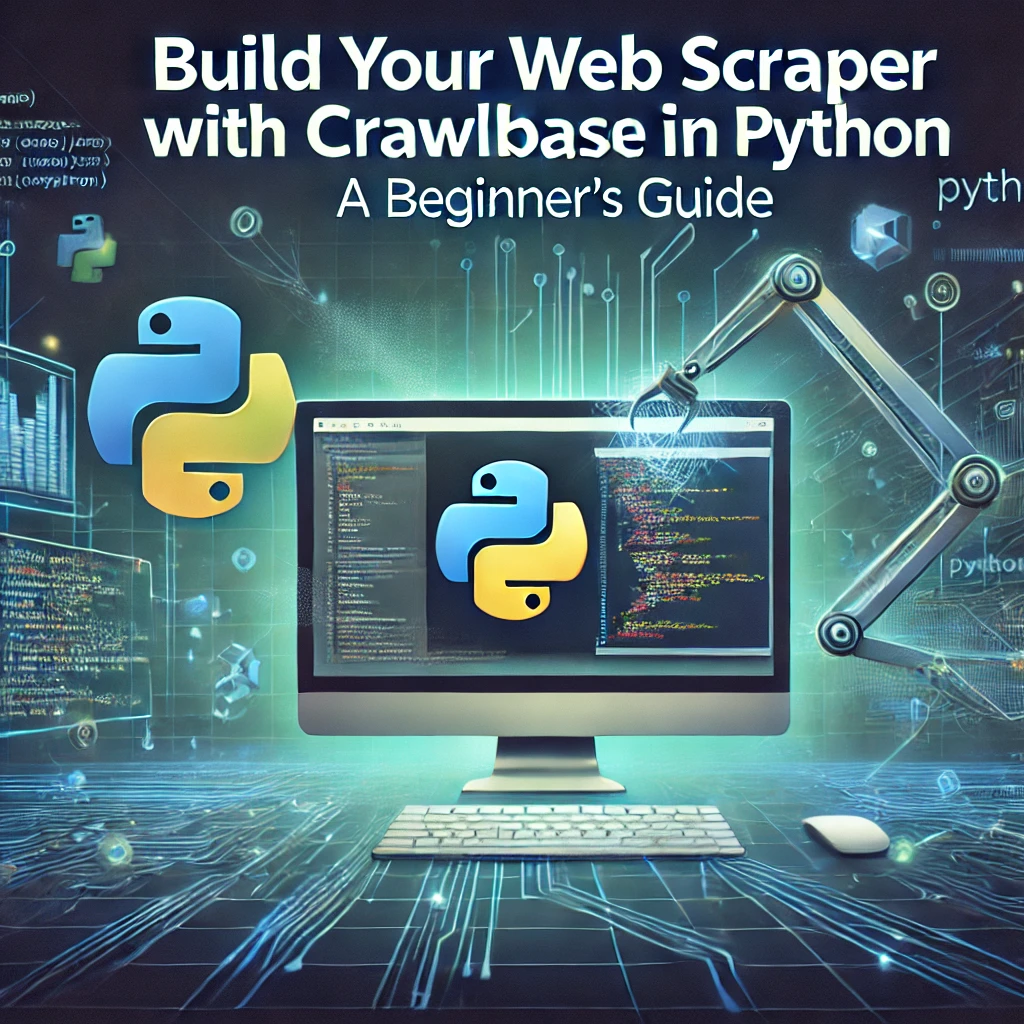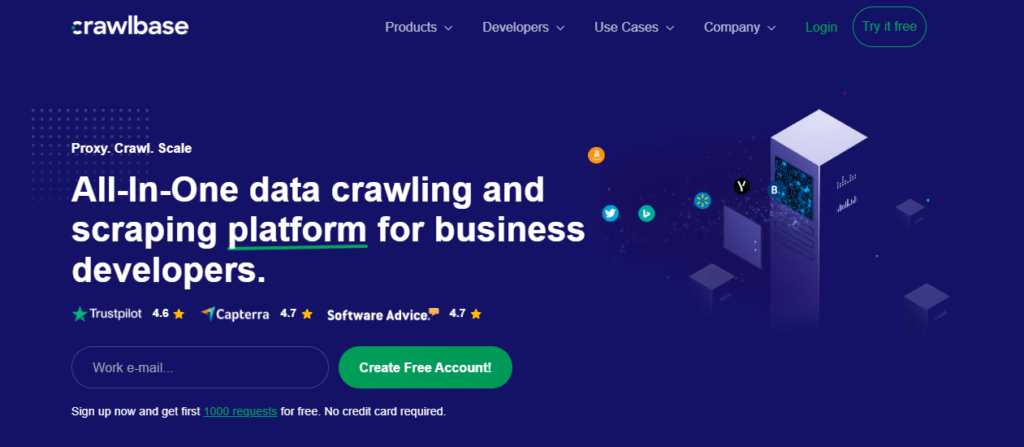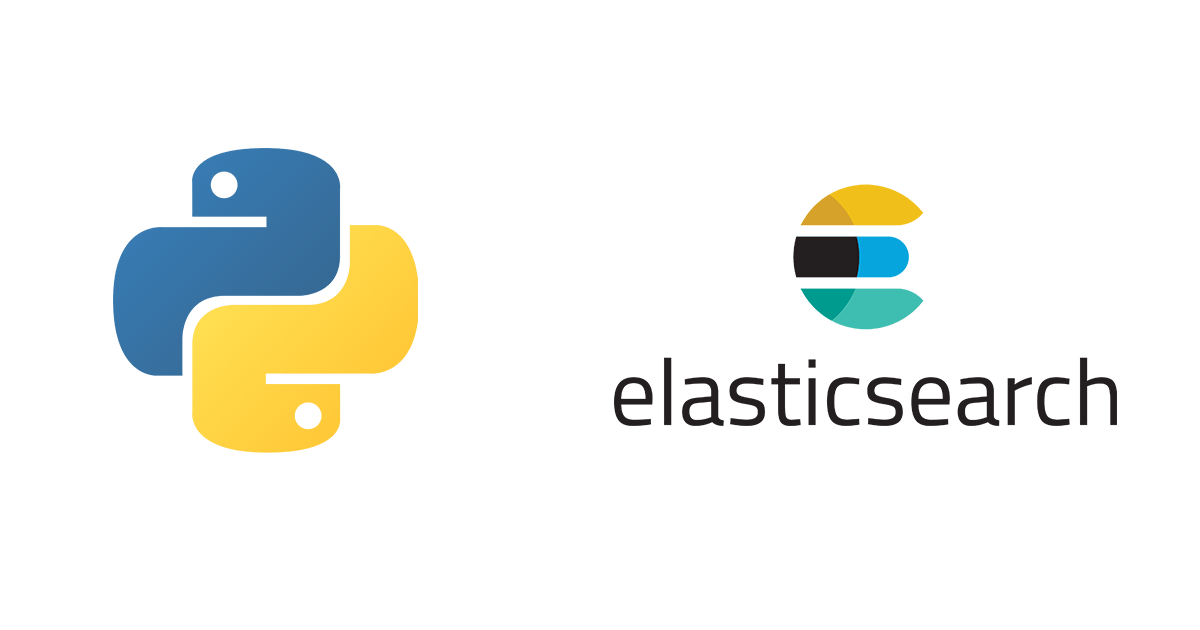If you’ve ever felt curious about collecting data straight from websites—but instantly thought, “This sounds way too complicated!”—then you’re in for a treat. Web scraping, contrary to popular belief, can be simple, efficient, and even fun… especially if you have the right tools in your arsenal. With just a few lines of Python code and an amazing third-party service like Crawlbase, you can automate the collection of information from the web while bypassing the usual challenges (think CAPTCHA, IP blocks, JavaScript-heavy sites, and more).
In this guide, I’m going to walk you step-by-step through the process of building your first web scraper with Python using Crawlbase. By the end, you’ll have a fully functional scraper ready to grab data, saving you countless hours of manual copy-pasting. Sounds like magic? Let’s make it real!
Why Use Crawlbase for Web Scraping?
Here’s the reality of modern web scraping: most websites don’t like being scraped. Why? They’re built to serve content to humans, not bots, which means web developers often put roadblocks like rate limits, IP restrictions, JavaScript rendering, and CAPTCHA challenges to keep automated scrapers at bay.
Enter Crawlbase (formerly known as ProxyCrawl), your web scraping superhero. Crawlbase is built specifically to help developers bypass these challenges—keeping your scraping efforts seamless, effective, and scalable. Unlike traditional scrapers, Crawlbase takes care of all the messy, backend-heavy stuff, so you don’t have to.
Here’s what makes Crawlbase stand out:
- Automatic Proxy Rotation
Websites often block scrapers by detecting repeated requests from the same IP address. Crawlbase solves this by rotating IPs automatically, making your scraper appear like legitimate human traffic from different locations. - JavaScript Rendering
More and more websites rely on JavaScript to load their content dynamically (looking at you, modern frameworks like React and Angular). Crawlbase renders content from JavaScript-heavy pages so you can scrape even the trickiest websites. - CAPTCHA Handling
Got hit with a CAPTCHA? No problem. Crawlbase takes care of bypassing CAPTCHA challenges so your scraper doesn’t get stuck. - Scalable and Secure
Whether you’re scraping a small blog or processing data from hundreds of pages, Crawlbase scales easily to meet your needs. Plus, it keeps your requests secure and prevents your IP from being flagged.
Bottom line? Crawlbase levels the playing field for developers, making it the ultimate tool for efficient web scraping.
What You’ll Need to Get Started
Before diving into the code, here’s a quick checklist:
- Python Installed
Don’t have Python yet? Head over to the official Python website to download and install it on your machine. - A Crawlbase API Key
Create a free account at Crawlbase and grab your API key. This key is your ticket to accessing Crawlbase’s scraping magic. - Basic Python Knowledge
Don’t worry. We’re keeping it beginner-friendly. If you know how to install libraries and write basic scripts, you’re good to go!
Step 1: Getting Your Environment Ready
Fire up your terminal (or Command Prompt) and install the Python library we’ll need, requests, which helps make HTTP calls to Crawlbase’s API.
pip install requests
This lightweight library is perfect for building API-based web scrapers.
Step 2: Build Your First API Request with Crawlbase
For this demo, let’s scrape the homepage of Hacker News, a popular tech site, to extract its latest headlines. Crawlbase’s API lets us request the HTML content of a webpage without worrying about proxies, rendering, or restrictions.
Here’s the basic Python script:
import requests
# Your Crawlbase API key
CRAWLBASE_API_KEY = "your_api_key_here"
# The URL we want to scrape
target_url = "https://news.ycombinator.com/"
# Crawlbase API endpoint
api_url = f"https://api.crawlbase.com/?token={CRAWLBASE_API_KEY}&url={target_url}"
# Make the API request
response = requests.get(api_url)
if response.status_code == 200:
# Successful response
print("Request was successful!")
html_content = response.text
print(html_content[:500]) # Preview the first 500 characters of the page
else:
print(f"Error: {response.status_code}")
Here’s what’s happening:
- The API endpoint includes your token (API key) and the URL of the webpage you want to scrape.
- We use requests.get() to send the request to Crawlbase’s API.
- If everything goes well, Crawlbase sends back the fully rendered HTML of the page.
Run this script, and you’ll see the raw HTML of Hacker News in your terminal!
Step 3: Parsing the Data You Need
While the raw HTML is cool, it’s not very useful in its current form. To extract meaningful data, we’ll use a parsing library called BeautifulSoup. This will allow us to find specific elements—like titles, links, or other structured data—in the HTML document. Install BeautifulSoup by running:
pip install beautifulsoup4
Next, update your script to extract the top headlines from Hacker News:
from bs4 import BeautifulSoup
import requests
# Your Crawlbase API key
CRAWLBASE_API_KEY = "your_api_key_here"
# The URL we want to scrape
target_url = "https://news.ycombinator.com/"
# Crawlbase API endpoint
api_url = f"https://api.crawlbase.com/?token={CRAWLBASE_API_KEY}&url={target_url}"
# Make the API request
response = requests.get(api_url)
if response.status_code == 200:
soup = BeautifulSoup(response.text, "html.parser")
# Select the HTML elements containing the headlines
headlines = soup.select(".titleline a")
for idx, headline in enumerate(headlines, 1):
title = headline.text
link = headline["href"]
print(f"{idx}. {title} ({link})")
else:
print(f"Error: {response.status_code}")
What does this script do?
- It fetches the webpage using Crawlbase’s API.
- The HTML is parsed with BeautifulSoup to extract all elements matching the CSS selector .titleline a.
- Each title and link is printed to the terminal in a clean format.
Run it, and you’ll get a neat list of Hacker News headlines along with their URLs
Take It to the Next Level
And there you have it—a fully functional web scraper in Python using Crawlbase! Of course, this is just the beginning. With Crawlbase, you can scale your scraper to handle:
- Pagination (scraping multiple pages).
- Data behind login screens.
- Websites with stricter anti-scraping measures (bye-bye, CAPTCHA!).
Experiment with additional features of the Crawlbase API—like custom headers, POST requests, and JSON responses—and see how much you can unlock.
Final Thoughts
Web scraping doesn’t have to be intimidating. With Crawlbase, the process becomes less about battling roadblocks and more about getting creative with what data you can collect. Whether you’re building a price tracker, collecting market research, or simply exploring the power of Python, your first scraper is an awesome gateway to endless possibilities.
So, what will you scrape next? If you have questions or want to share your exciting scraping projects, let me know in the comments below.






